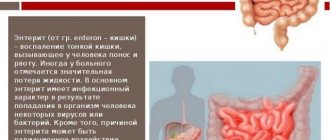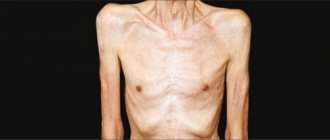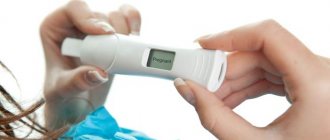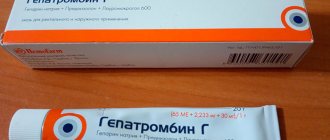Indications for use
- primary prevention of acute myocardial infarction in the presence of risk factors (including diabetes mellitus, hyperlipidemia, arterial hypertension, obesity, smoking, old age) and recurrent myocardial infarction;
- unstable angina (including suspicion of acute myocardial infarction);
- stable angina;
- prevention of ischemic stroke (including in patients with transient cerebrovascular accidents);
- prevention of thromboembolism after operations and invasive interventions on blood vessels (including coronary artery bypass surgery, carotid endarterectomy, arteriovenous bypass, angioplasty and stenting of the coronary arteries, carotid angioplasty);
- prevention of deep vein thrombosis and thromboembolism of the pulmonary artery and its branches (including with prolonged immobilization as a result of extensive surgery).
ASK instructions for use
Composition Each tablet contains: active substance: acetylsalicylic acid – 75 mg or 150 mg; excipients: corn starch, crospovidone (polyplasdon XL-10), talc, microcrystalline cellulose. shell composition: Advantia Prefered® (hydroxypropyl methylcellulose, copovidone, polydextrose, propylene glycol, medium chain triglycerides, titanium dioxide, yellow iron oxide), Advantia Performance® (methacrylic acid-ethyl acrylate copolymer, talc, titanium dioxide, triethyl citrate, silica, orange yellow E 110, red charming E 129). Release form Enteric-coated tablets, 75 mg and 150 mg.
Pharmacotherapeutic group Non-steroidal anti-inflammatory drug (NSAID). Antiplatelet agent.
ATX code B01AC06
Pharmacological properties Acetylsalicylic acid inhibits platelet aggregation, and also has antipyretic, analgesic and anti-inflammatory effects. Aggregation is inhibited even after using the drug in low doses, the effect persists for several days after taking a single dose. Enteric-coated tablets are a pharmaceutical form that does not disintegrate in the stomach, thereby reducing the risk of direct contact of acetylsalicylic acid with the gastric mucosa and its damage. The disintegration of the tablet and the release of the active substance occurs only in the duodenum.
Indications for use To reduce the risk of: death in patients with suspected acute myocardial infarction; death in patients who have had myocardial infarction; transient ischemic attacks (TIA) and stroke in patients with TIA; morbidity and mortality in stable and unstable angina. For the prevention of: thrombosis and embolism after vascular surgery (percutaneous transluminar catheter angioplasty (PTCA), carotid endarterectomy, coronary artery bypass grafting (CABG), arteriovenous bypass grafting); deep vein thrombosis and pulmonary embolism after prolonged immobilization (post-surgical operations); myocardial infarction in patients at high risk of developing cardiovascular complications (diabetes mellitus, controlled arterial hypertension) and in persons with multifactorial risk of cardiovascular diseases (hyperlipidemia, obesity, smoking, old age, etc.). For secondary prevention of stroke. Method of administration and dosage Adults are usually prescribed 1-2 tablets of 75 mg or 1 tablet of 150 mg per day during or after meals. The tablets should be swallowed whole with a small amount of water. For recent myocardial infarction or for patients with suspected myocardial infarction: the initial loading dose is 225-300 mg of acetylsalicylic acid 1 time per day in order to achieve rapid suppression of platelet aggregation. A dosage of 300 mg per day can be used for short periods for therapeutic indications. Tablets can be chewed for faster absorption.
Side effects From the gastrointestinal tract, dyspepsia, pain in the epigastric region and abdominal pain are observed, in some cases - inflammation of the gastrointestinal tract, clinical manifestations of erosive and ulcerative lesions of the gastrointestinal tract, which can in rare cases cause gastrointestinal hemorrhages and perforations with corresponding laboratory parameters. Due to its antiplatelet effect on platelets, acetylsalicylic acid may increase the risk of bleeding. Bleedings such as intraoperative hemorrhages, hematomas, bleeding from the genitourinary system, nosebleeds, bleeding from the gums, rarely or very rarely - serious bleeding such as gastrointestinal hemorrhages, cerebral hemorrhages (especially in patients with uncontrolled hypertension and / or with simultaneous use of antihemostatic agents), in rare cases could potentially be life-threatening. Hemorrhages can lead to acute and chronic posthemorrhagic anemia/iron deficiency anemia (due to the so-called hidden microbleeding) with corresponding laboratory manifestations and clinical symptoms, such as asthenia, pale skin, hypoperfusion. Patients with individual hypersensitivity to salicylates may develop allergic skin reactions, including symptoms such as rash, urticaria, swelling, itching. In patients with bronchial asthma, the incidence of bronchospasm may increase; Mild to moderate allergic reactions potentially affect the skin, respiratory tract, gastrointestinal tract, and cardiovascular system. Severe reactions, including anaphylactic shock, have been observed very rarely. Rarely - transient liver failure with increased levels of liver transaminases. Dizziness and ringing in the ears have been observed, which may indicate an overdose.
Contraindications Hypersensitivity to acetylsalicylic acid, other salicylates or any component of the drug. Chronic asthma caused by a history of taking salicylates or NSAIDs. Acute peptic ulcers. Hemorrhagic diathesis. Severe renal failure. Severe liver failure. Severe heart failure. Combination with methotrexate at a dose of 15 mg/week or more.
Overdose An overdose of salicylates is possible due to chronic intoxication resulting from long-term therapy, as well as due to acute intoxication, which is life-threatening (overdose), and the causes of which may be, for example, accidental use by children or an unexpected overdose. The first symptoms of acetylsalicylic acid intoxication are dizziness, nausea, vomiting, tinnitus and increased breathing, and imbalance. Other symptoms were also observed: hearing loss, blurred vision, headache, increased sweating, motor agitation, drowsiness and coma, convulsions, hyperthermia, confusion. Chronic salicylate poisoning can be hidden because its signs and symptoms are nonspecific. If you take a larger dose of the drug than recommended, you should immediately consult a doctor, and in case of acute poisoning, you should immediately go to the hospital. Overdose of the drug in elderly patients and young children (taking larger than recommended doses or accidental poisoning) requires special attention, since in these groups of patients it can lead to death. In case of severe intoxication, disturbances in acid-base balance and water-electrolyte balance occur (metabolic acidosis and dehydration). There is no specific antidote.
Special instructions and precautions The drug is used with caution in case of: hypersensitivity to analgesic, anti-inflammatory, antirheumatic drugs, as well as in the presence of allergies to other substances; ulcers of the gastrointestinal tract, including a history of chronic and recurrent or gastrointestinal bleeding; simultaneous use of anticoagulants; impaired renal and/or liver function. In case of long-term use of the drug, the patient should consult a doctor before starting ibuprofen. In patients with allergic complications, including bronchial asthma, allergic rhinitis, urticaria, itching, swelling of the mucous membrane and nasal polyposis, as well as in their combination with chronic respiratory tract infections and in patients with hypersensitivity to NSAIDs during treatment with acetylsalicylic acid bronchospasm or an attack of bronchial asthma may develop. During surgical operations (including dental), the use of drugs containing acetylsalicylic acid may increase the likelihood of bleeding. When using small doses of acetylsalicylic acid, the excretion of uric acid may be reduced. This may lead to gout in patients with decreased excretion of uric acid. During treatment with acetylsalicylic acid, you should not drink alcohol, given the increased risk of damage to the mucous membrane of the gastrointestinal tract.
Use during pregnancy and lactation The drug can be used during pregnancy only if other medications are ineffective. The use of salicylates in the first trimester of pregnancy in some retrospective epidemiological studies was associated with an increased risk of congenital defects (palatoschisis (“cleft palate”), heart defects). However, with long-term use of the drug in therapeutic doses exceeding 150 mg / day, this risk turned out to be low: as a result of a study conducted on 32,000 mother-child pairs, there was no connection between the use of acetylsalicylic acid and an increase in the number of birth defects. Salicylates can be used in the first and second trimesters of pregnancy only after assessing the risk/benefit ratio. According to preliminary estimates, with long-term use of the drug, it is advisable not to take acetylsalicylic acid in a dose exceeding 150 mg/day. In the third trimester of pregnancy, taking salicylates in high doses (more than 300 mg/day) can cause post-term pregnancy and weakening of contractions during childbirth, and can also lead to cardiopulmonary toxicity (premature closure of the ductus arteriosus) in children. The use of acetylsalicylic acid in large doses shortly before birth can lead to intracranial bleeding, especially in premature infants. Thus, except in extremely special cases indicated by cardiac or obstetric medical indications based on special monitoring, the use of acetylsalicylic acid during the last trimester of pregnancy is contraindicated. Acetylsalicylic acid and its metabolites are excreted in small quantities in the breast milk of nursing women. To date, with short-term use of salicylates by mothers, the onset of undesirable effects in breastfed children has not been established; as a rule, there is no need to stop breastfeeding. However, in case of long-term use of high doses of acetylsalicylic acid, breastfeeding should be discontinued.
Use in children Do not use drugs containing acetylsalicylic acid in children with acute respiratory viral infection (ARVI), which is accompanied or not accompanied by an increase in body temperature. Some viral diseases, especially influenza A, influenza B and chickenpox, carry the risk of developing Reye's syndrome, which is a very rare but life-threatening disease that requires urgent medical attention. The risk may be increased if acetylsalicylic acid is used as a concomitant drug, but a cause-and-effect relationship in this case has not been proven. If these conditions are accompanied by prolonged vomiting, this may be a sign of Reye's syndrome. Considering the above reasons, children under 16 years of age are contraindicated in using the drug without special indications (Kawasaki disease). Effect on the ability to drive vehicles and operate machines. The drug ASA does not affect the ability to drive vehicles and operate machines.
Interaction with other drugs The use of acetylsalicylic acid simultaneously with methotrexate in doses of 15 mg/week or more is contraindicated, due to increased hematological toxicity of methotrexate (reduced renal clearance of methotrexate by anti-inflammatory agents and displacement of methotrexate by salicylates from binding to plasma proteins). Combinations that should be used with caution: Use with methotrexate in doses less than 15 mg/week increases the hematological toxicity of methotrexate (reduction of renal clearance of methotrexate by anti-inflammatory agents and displacement of methotrexate by salicylates from plasma protein binding). simultaneous use of ibuprofen prevents the irreversible suppression of platelets by acetylsalicylic acid. Treatment with ibuprofen in patients at risk of cardiovascular disease may limit the cardioprotective effect of acetylsalicylic acid. with simultaneous use of the drug and anticoagulants, the risk of bleeding increases. With the simultaneous use of high doses of salicylates with NSAIDs (due to their mutually exclusive effect), the risk of ulcers and gastrointestinal bleeding increases. simultaneous use with uricosuric drugs, such as benzobromarone, probenecid, reduces the effect of uric acid excretion (due to competition for the excretion of uric acid by the renal tubules). When used simultaneously with digoxin, the concentration of the latter in the blood plasma increases due to a decrease in renal excretion. with the simultaneous use of high doses of acetylsalicylic acid and oral antidiabetic drugs from the group of sulfonylurea derivatives or insulin, the hypoglycemic effect of the latter is enhanced due to the hypoglycemic effect of acetylsalicylic acid and the displacement of sulfonylurea bound to plasma proteins. diuretics in combination with high doses of acetylsalicylic acid reduce glomerular filtration by reducing the synthesis of prostaglandins in the kidneys. systemic glucocorticosteroids (with the exception of hydrocortisone), used for replacement therapy for Addison's disease, during treatment with corticosteroids reduce the level of salicylates in the blood and increase the risk of overdose after treatment. When used with GCS, the risk of gastrointestinal bleeding increases. selective serotonin reuptake inhibitors: increased risk of upper gastrointestinal bleeding due to the possibility of a synergistic effect. ACE inhibitors (ACEIs) in combination with high doses of acetylsalicylic acid cause a decrease in glomerular filtration due to inhibition of vasodilatory prostaglandins and a decrease in the antihypertensive effect. when used simultaneously with valproic acid, acetylsalicylic acid displaces it from its connection with plasma proteins, increasing the toxicity of the latter. Ethyl alcohol causes damage to the mucous membrane of the gastrointestinal tract and prolongs bleeding time due to the synergy of acetylsalicylic acid and alcohol.
Storage conditions Store in a place protected from moisture and light at a temperature not exceeding 25 °C. Keep out of the reach of children.
Shelf life: 2 years. Do not use after the expiration date stated on the packaging.
Packaging of 10 or 15 tablets in a blister pack. Three, five or six blister packs of 10 tablets each along with instructions for use in a cardboard pack. Six blister packs of 15 tablets each along with instructions for use in a cardboard pack.
Directions for use and doses
The drug is taken orally, 1 time/day, preferably before meals. The tablets should be taken with plenty of liquid. CardiASK® is intended for long-term use. The duration of therapy is determined by the doctor.
- For the purpose of primary prevention of acute myocardial infarction in the presence of risk factors, 50-100 mg/day is prescribed.
- To prevent recurrent myocardial infarction, for stable and unstable angina - 50-100 mg/day.
- For unstable angina (if acute myocardial infarction is suspected), 50-100 mg/day is prescribed.
- For the prevention of ischemic stroke and transient cerebrovascular accident - 50-100 mg/day.
- For the prevention of thromboembolism after operations and invasive interventions on blood vessels - 50-100 mg/day.
- To prevent deep vein thrombosis and thromboembolism of the pulmonary artery and its branches, 50-100 mg/day is prescribed.
ASK-cardio
Active substance:
Acetylsalicylic acid
Pharmgroup:
Antiplatelet agents
Average price in pharmacies
| Name | Manufacturer | average price |
| Ask-cardio 0.1 n30 tablet enteric solution p/capt/membranes | MEDISORB | 65.00 |
| Ask-cardio 0.1 n60 tablet enteric solution p/capt/membranes | MEDISORB | 95.00 |
Analogs for the active substance:Anopyrine Aspicor Aspinat Aspinat 300 Aspinath Cardio Aspirin York Aspirin Aspirin 1000 Aspirin Cardio Acecardole Acenterine Acetylsalicylic acid Acetylsalicylic acid Cardio Acetylsalicylic acid MS Acetylsalicylic acid York Acetylsalicylic acid-Rusfar Acetylsalicylic acid-UBF Acetylsalicylic acid tablets Acylpyrine Acsbirin Bufferin Zorex Morning CardiASK Colfaritis Mikristin Plidol 100 Plidol 300 Taspir Thrombo ACC Thrombogard 100 Thrombopol Walsh-asalgin Upsarin UPSA HR-Pain |
Contraindications
- erosive and ulcerative lesions of the gastrointestinal tract (in the acute phase);
- gastrointestinal bleeding;
- bronchial asthma induced by taking salicylates and NSAIDs;
- complete or incomplete combination of bronchial asthma, recurrent polyposis of the nose and paranasal sinuses and intolerance to acetylsalicylic acid and other NSAIDs;
- hemorrhagic diathesis;
- combined use with methotrexate at a dose of 15 mg per week or more;
- liver failure (class B and higher on the Child-Pugh scale);
- renal failure (creatinine clearance less than 30 ml/min);
- chronic heart failure (III-IV functional class according to the NYHA classification;
- I and III trimesters of pregnancy;
- lactation period;
- children and adolescents up to 18 years of age;
- lactase deficiency, lactose intolerance, glucose/galactose malabsorption syndrome;
- hypersensitivity to acetylsalicylic acid and auxiliary components of the drug;
- hypersensitivity to other NSAIDs.
special instructions
ASA can provoke bronchospasm, as well as cause attacks of bronchial asthma and other hypersensitivity reactions. Risk factors include a history of bronchial asthma, hay fever, nasal polyposis, chronic respiratory diseases, and allergic reactions to other drugs (for example, skin reactions, itching, urticaria).
The inhibitory effect of ASA on platelet aggregation persists for several days after administration, and therefore may increase the risk of bleeding during surgery or in the postoperative period. If it is necessary to absolutely exclude bleeding during surgery, the use of ASA in the preoperative period should be completely abandoned if possible.
ASA in low doses can trigger the development of gout in predisposed individuals (those with reduced excretion of uric acid).
ASA in high doses has a hypoglycemic effect, which must be kept in mind when prescribing the drug to patients with diabetes mellitus receiving hypoglycemic drugs.
When using GCS and salicylates in combination, it should be remembered that during treatment the concentration of salicylates in the blood is reduced, and after discontinuation of GCS, an overdose of salicylates is possible.
Exceeding the dose of acetylsalicylic acid is associated with the risk of gastrointestinal bleeding.









